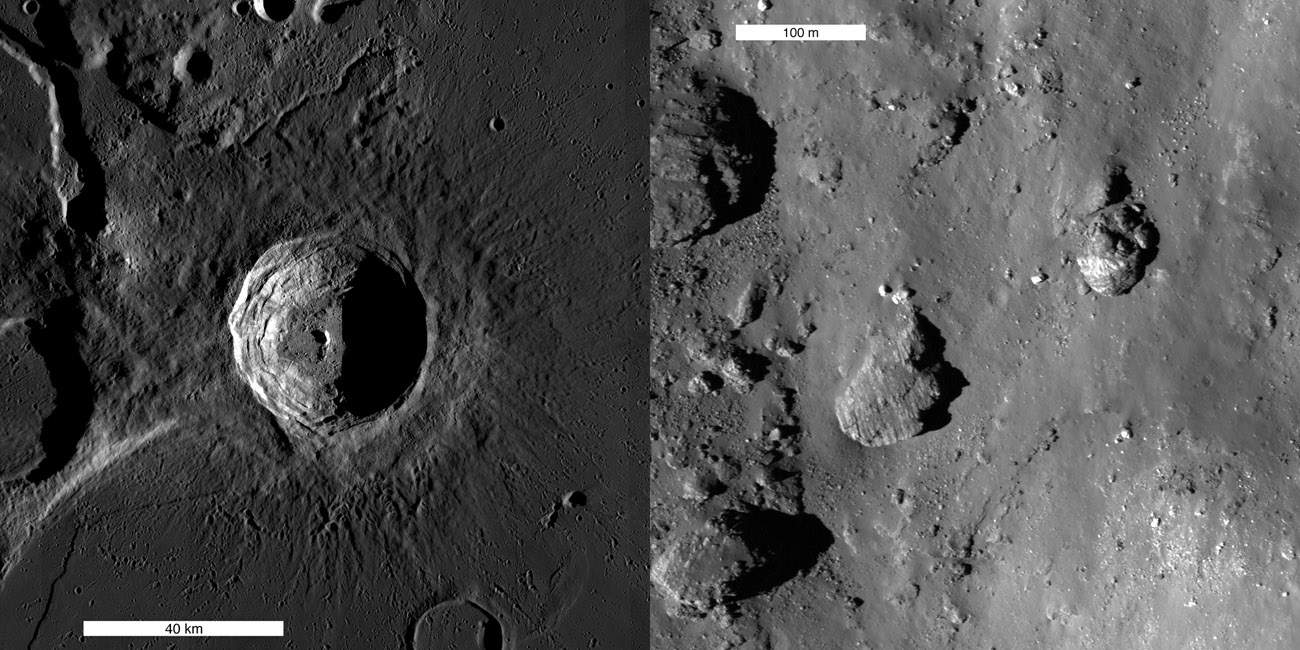August 4, 2020
Tumbled Layers
Originally published February 21, 2011

LRO WAC mosaic and NAC image from LRO Featured Image (NASA/GSFC/Arizona State University)
Many landscapes are made of layers. Materials get piled on top of pre-existing stuff. On Earth, it is often sediments
that get deposited one on top another. The Moon makes layers in fewer ways, but they are there none-the-less. For
example, lava flows move horizontally (and downslope), making piles of layers. And ejecta from impacts rain down,
or surge across the landscape, all making more layers. Thus, it is not surprising that LRO recently imaged layering
in 100 m size bounders that tumbled downslope on the inner wall of Aristarchus. What process made the layers? It
depends somewhat on where on the crater wall the closeup NAC image comes from. From rim crest to crater floor
there are a variety of materials. The height that the rim sticks up above the surrounding plain is half due to fallback
ejecta and half to upturned target rocks. Below this raised part of the wall a cross section of the impacted terrain is
exposed. And of course, the entire wall maybe be splashed by impact melt and veneered by debris that slid down-slope. But those processes should not make coherent layers as seen in thees tumbled blocks. Because so many
layers are visible, and they are rather thin (~ 5 m thick) and numerous, it is more likely that these are layers of lava
flows. A much more dramatic example of layering inside a crater rim occurs at Ryder crater on the farside.
Chuck Wood
Related Links
Rükl plate 18
Yesterday's LPOD: Shameful Plug
Tomorrow's LPOD: Ancient Mystery
COMMENTS?
Register, Log in, and join in the comments.



